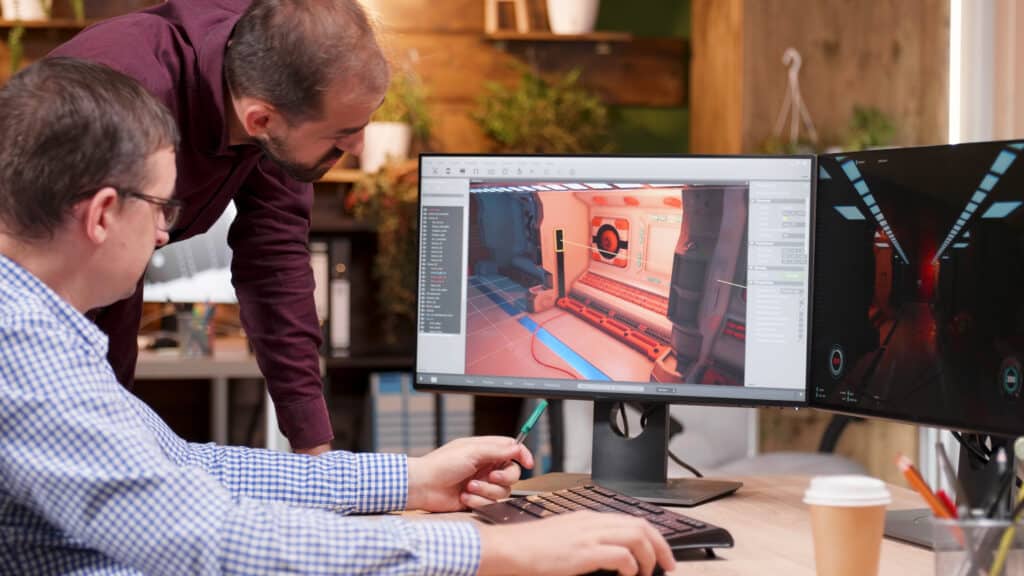
In an industry often characterized by complex processes and traditional methodologies, the advent of innovative technology is reshaping the landscape of construction project management. Enter Holobuilder, a pioneering platform that harnesses the power of 3D technology to revolutionize how construction projects are visualized, tracked, and managed. With the ability to create immersive, digital representations of job sites, Holobuilder is not just enhancing communication and collaboration among stakeholders; it’s redefining the very essence of project oversight. This blog post will delve into how Holobuilder’s cutting-edge solutions are streamlining workflows, improving accuracy, and fostering transparency, ultimately transforming the construction industry into a more efficient, data-driven field. Join us as we explore the remarkable ways 3D technology is paving the path for a new era in construction management.
Introduction to Holobuilder and Its Vision
Holobuilder is revolutionizing construction management with advanced 3D technology that bridges the physical and digital worlds. Designed to enhance efficiency and transparency, Holobuilder empowers project managers, stakeholders, and teams to visualize construction sites with 360-degree imaging and virtual reality, providing an immersive experience for real-time site monitoring and collaboration.
The platform’s core mission is to eliminate inefficiencies and miscommunication in construction projects. With Holobuilder, users can create detailed 3D models of job sites, allowing for real-time updates and seamless team coordination. This proactive approach reduces delays, controls costs, and supports informed decision-making.
Holobuilder’s user-friendly interface makes it accessible for all levels of expertise, from seasoned construction professionals to newcomers. By harnessing cutting-edge technology, Holobuilder is driving productivity and accountability, reshaping project management to ensure every stakeholder remains engaged throughout the process.
As we explore Holobuilder’s transformative features, we’ll uncover the platform’s benefits for construction teams and the future it envisions for the industry. Holobuilder isn’t just building structures—it’s redefining project management for a more efficient and connected construction process.
The Challenges in Traditional Construction Project Management
Construction project management often faces challenges like inefficiencies, budget overruns, and delays. Traditional methods rely heavily on paperwork and face-to-face meetings, which can limit communication and collaboration among teams. Without real-time data, managing dynamic construction environments becomes even more challenging.
A significant issue is the disconnect between stakeholders—architects, contractors, and clients. Miscommunication can lead to misunderstandings about project specifications, resulting in costly rework. Furthermore, limited visualization tools, like 2D blueprints, make it difficult for stakeholders to fully grasp project complexity, often causing confusion and misalignment.
Tracking progress against timelines and budgets is another hurdle. Manual data entry and siloed information can obscure a comprehensive view of a project’s status, eroding trust among team members and clients.
Holobuilder addresses these challenges with 3D technology, offering advanced visualization, real-time data, and streamlined communication to redefine construction project management, setting a new standard for efficiency and precision in the industry.
What is 3D Technology in Construction?
3D technology in construction represents a transformative approach that utilizes three-dimensional digital models and visualization tools to enhance project planning, execution, and management. This technology encompasses various applications, from computer-aided design (CAD) software to advanced Building Information Modeling (BIM) systems, all aimed at improving accuracy, efficiency, and collaboration within the industry.
A significant advantage of 3D technology is the ability to create detailed digital representations of physical spaces. These models enable stakeholders—including architects, engineers, and contractors—to visualize entire projects before construction begins. By using 3D modeling, teams can evaluate design elements, identify potential issues, and make informed decisions early in the planning phase, significantly reducing costly changes during construction.
Furthermore, 3D technology enhances real-time collaboration among team members, irrespective of their physical locations. Platforms like Holobuilder allow construction professionals to share 3D models and updates in an immersive environment. This interactivity facilitates virtual walkthroughs, simulating construction scenarios and gathering stakeholder feedback, ensuring alignment among all parties.
Additionally, 3D scanning technology captures precise measurements of existing structures, creating accurate as-built models for renovations and expansions. This minimizes risks associated with outdated blueprints.
In summary, 3D technology is redefining construction processes, enhancing project planning and collaboration, and ensuring the delivery of high-quality, efficient projects. Holobuilder is leading this transformation, equipping professionals with the necessary tools for modern project management.
How Holobuilder Integrates 3D Technology into Construction Projects
Holobuilder is revolutionizing construction project management by integrating 3D technology into everyday operations. Using advanced 3D visualization, Holobuilder transforms how construction teams plan, execute, and monitor their projects.
The process starts with capturing high-resolution 360-degree images of job sites, creating a virtual replica that allows stakeholders to explore the space as if they were physically present. This immersive model serves as a central collaboration hub, enabling architects, project managers, and subcontractors to interact seamlessly, regardless of location.
Holobuilder enhances communication and accuracy in project execution. By linking 3D models with project management tools, teams can monitor progress against the digital twin of the construction site. This real-time tracking helps identify discrepancies early, allowing for proactive adjustments that prevent costly delays.
Moreover, Holobuilder’s advanced analytics tools provide insights into project timelines and resources. By simulating various construction scenarios, teams can optimize workflows, ensuring efficient project delivery. Ultimately, Holobuilder fosters transparency and accountability, empowering teams to realize their projects’ full potential.
Key Features of Holobuilder’s Platform
Holobuilder’s platform revolutionizes construction project management through innovative 3D technology. Key features that distinguish Holobuilder from traditional solutions include:
1. 3D Visualization: Users can create immersive, interactive 3D models of construction sites, enhancing understanding and allowing stakeholders to identify potential issues before they escalate.
2. Virtual Site Walks: Holobuilder enables digital navigation through construction sites, facilitating collaboration for remote teams without requiring physical presence.
3. Progress Tracking: The platform includes powerful tools for tracking project progress with time-lapse visuals, providing a clear representation of progress that aids in reporting and decision-making.
4. Seamless Collaboration: Multiple users can access and annotate 3D models, improving communication and reducing misunderstandings, thus enhancing project efficiency.
5. Integration Capabilities: Holobuilder integrates smoothly with existing management tools, streamlining operations and enhancing productivity.
6. Mobile Accessibility: A mobile-friendly interface allows users to access project data anytime, beneficial for on-site teams needing real-time updates.
7. Data-Driven Insights: Users can generate reports that analyze trends, empowering teams to make informed, strategic decisions.
By combining these features, Holobuilder creates a smarter, more efficient way to manage complex construction projects.
Benefits of Using 3D Technology in Project Management
3D technology is transforming project management in the construction industry by streamlining processes, enhancing collaboration, and improving outcomes. Tools like Holobuilder allow construction teams to visualize projects in immersive detail, moving traditional workflows into dynamic, efficient practices.
A key advantage of 3D technology is the ability to create detailed visualizations before breaking ground, which enables better planning and design adjustments. This foresight significantly reduces costly changes during construction and helps project managers identify potential challenges early, ensuring everyone is aligned from the start.
Additionally, 3D models enhance communication among stakeholders. Architects, contractors, and clients can interact within the same digital environment, fostering collaboration and minimizing misunderstandings that can derail progress.
Holobuilder’s platform further improves project tracking and documentation through real-time progress capture using 360-degree imagery, facilitating transparency for all parties involved. By utilizing virtual walkthroughs and simulations, teams can optimize workflows and reduce downtime, accelerating project timelines and enhancing efficiency. Integrating 3D technology is essential for construction professionals aiming to stay competitive in an evolving industry.
Conclusion: Embracing the Future of Construction Management
Holobuilder stands at the forefront of a transformative shift in construction project management, integrating advanced 3D technology to address long-standing industry challenges. By providing immersive, detailed visualizations of job sites, Holobuilder not only enhances communication and collaboration but also fosters a deeper understanding of project dynamics among all stakeholders. This innovation allows teams to anticipate challenges, make informed decisions, and adapt quickly to changing conditions, significantly reducing the risk of costly delays and misunderstandings.
Moreover, the platform’s real-time tracking capabilities and seamless integration with existing management tools empower construction professionals to maintain control over project timelines and budgets. As the industry increasingly adopts digital solutions, Holobuilder is paving the way for a more efficient, transparent, and data-driven construction environment. By embracing this technology, construction teams can elevate their project management practices, ensuring they remain competitive in an ever-evolving landscape. Holobuilder is not just shaping the future; it is redefining what is possible in construction management today.
Streamline project management with Holobuilder’s 3D technology! Track progress, collaborate in real time, and enhance efficiency with immersive digital construction tools. Perfect for architects, engineers, and contractors. Contact us today to discover how Holobuilder can revolutionize your workflow and bring your projects to life in 3D!




